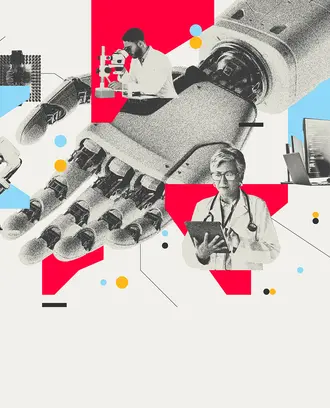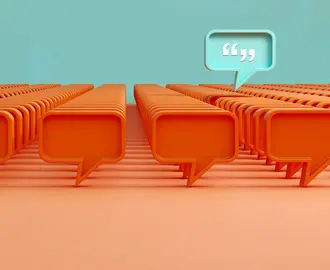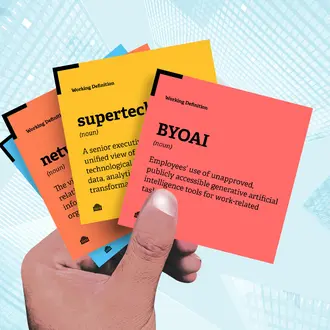Long before French explorers arrived to claim the Wolastoq (Saint John River) watershed as their own, the Maliseet tribe of Indigenous people lived, hunted, and fished along the waterway between what would later be Maine and the Canadian province of New Brunswick.
That land, according to Maliseet legend, was shaped by Glooscap, a figure powerful enough to break down beaver dams and leave waterfalls in their wake.
Today, the Maliseet people are the conservators of that watershed land, and they call on their legends, oral histories, and lived experiences to shape their work with present-day partners.
This approach is called two-eyed seeing, explained Patricia Saulis, an affiliate researcher with the MIT Comparative Media Studies/Writing program, and a former MIT MLK Visiting Scholar. Saulis is a member of the Maliseet tribe of Indigenous people and executive director of the Maliseet National Conservation Council.
“Two-eyed seeing involves the balancing of perspectives so that we can gain a better understanding of the work that we are doing to make the world a better place,” Saulis said. “Tapping into a diversity of knowledge systems will help us innovate and imagine solutions that we may not be able to create without such a process.”
Finding those solutions is critical. Indigenous people make up about 5% of the world’s population, but they are responsible for protecting more than 80% of the globe’s biodiversity.
We spoke with Saulis about two-eyed seeing, being flexible with ideas, and the next generation of leaders inspiring her conservation work.
What inspires you?
My culture, upbringing, community, and our elders and youth all inspire me. We have overcome and continue to overcome barriers, obstacles, stereotypes, discrimination, and injustice that could have stopped so many from even trying to make a difference. Every person has a role to play and responsibilities to take on to leave this place better than they found it. Being inspired motivates me to be the change.
Who inspires you?
First and foremost, my children. Also, leaders of peace and justice like Martin Luther King Jr., Nelson Mandela, Mahatma Gandhi, the Dalai Lama, and [young minds like] Malala Yousafzai, Greta Thunberg, Autumn Peltier, and the many Indigenous land defenders.
Where do you get ideas?
From the spirit of imagination. I listen to my inner intuition and spirit for insight and guidance. They say that there are truly no new ideas — that every idea is at some level a reimagining of some fragment of idea from the ancestral past or reincarnation of idea through a recycling of cosmic energies.
How do you keep track of new ideas?
New ideas are discussed internally and then externally among the Maliseet National Conservation Council. This allows for a seasoning of ideas that goes beyond the typical hierarchical approach. Ideas can come from outside our organization and are shared with our staff or our board, and then they are discussed with our communities including the Tobique First Nation, Woodstock First Nation, Kingsclear First Nation, St. Mary’s First Nation, and the Oromocto First Nation.
When do you know it is time to abandon an idea?
Abandoning an idea involves an evaluation process that can be lengthy or immediate, thus we must retain flexibility in assessing individual ideas. Some ideas require further consideration while others might be discounted immediately. Testing if the idea is received well or not can determine how to proceed.
What was your worst idea?
I have been blessed with both good and not good ideas. Regrettably, some ideas have been carried forward by others without my consent; often Indigenous knowledge and/or ideas can be appropriated without consent or acknowledgement. This is the life of ideas. Some ideas remain a part of your life and work while others end up elsewhere because ideas can be taken once you have expressed them. I have learned that my ideas come from the creative spirit and as such, I may or may not get to be part of them.
How do you know an idea is a good one?
I know an idea is a good one when it receives a favorable response from those who the idea may impact. I’ll directly ask for feedback, and evaluate the idea based on that feedback.
What’s the biggest idea you are working on right now?
Two-eyed seeing is the biggest idea that I am working on right now. It is an idea that has been curated by many practitioners and scholars across many disciplines. Originally, the phrase was expressed in Mi’kmaw from two esteemed Mi’kmaq elders: Albert and Murdena Marshall. Essentially, it asks us to look through our eyes with one eye viewing from the Western-based system of thought and the other eye viewing from the Indigenous-based system of thought.
We need to reach beyond entrenched learning paradigms founded in the Western tradition and draw from Indigenous knowledge systems to expand notions of what learning and teaching looks like.
At MIT Sloan, we talk about ideas made to matter — ideas that are carefully developed and have meaningful impact in the world. In that context — what is your idea made to matter?
I am connecting that two-eyed seeing approach with the research that has been done at the international level on the connection between the successful retention of biodiversity and the stewardship of Indigenous peoples, whose Indigenous languages and practices account for the best retention of biodiversity around the globe.
As a visiting scholar in the MIT MLK Visiting Professors and Scholars Program, it is an idea that I have shared with a group from MIT Comparative Media Studies/Writing (under the MIT School of Humanities Arts and Social Sciences) who are competing in MIT’s Grand Climate Challenge. I put forward the idea that Indigenous peoples and Indigenous communities worldwide can help contribute to building global climate change solutions. This type of Indigenous-led idea is not often pursued within institutions as it represents a departure from only utilizing Western-based approaches. I took the opportunity to advance such an idea, with the hope MIT would see the value in pursuing this hybrid approach and the value in leading such an advancement in learning and innovation.
Read next: The former IBM CEO on diversity and the discomfort of good ideas



